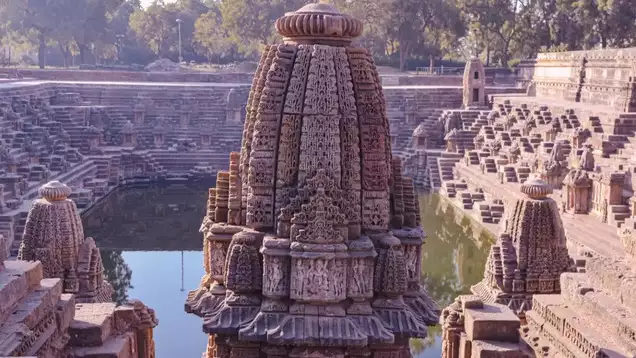Solanki Architecture in India: A Timeless Legacy.
 Neha Rathod
Neha Rathod
India is a land of architectural marvels, where each dynasty has left its indelible mark on the landscape. Among these, Solanki architecture stands out as a testament to the creative brilliance of the Solanki dynasty, which flourished primarily in western India from the 10th to the 13th centuries. This architectural style, characterized by its intricate craftsmanship and structural ingenuity, remains a celebrated chapter in India's architectural heritage.
The Solanki dynasty, also known as the Chalukyas of Gujarat, rose to prominence in the region of present-day Gujarat and Rajasthan. Their architectural legacy can be traced back to the 10th century when they established their rule over parts of western India. The Solanki rulers were known for their patronage of art, culture, and architecture, leading to the development of a distinctive architectural style that blended indigenous traditions with
Solanki architecture is characterized by several distinctive features that set it apart from other contemporary styles:
Temple Complexes: One of the most notable contributions of Solanki architecture is in the construction of elaborate temple complexes. These temples typically feature a central shrine surrounded by subsidiary shrines, mandapas (assembly halls), and sometimes elaborate gateways or toranas.
Artistic Sculptures: Intricately carved sculptures depicting deities, celestial beings, and scenes from Hindu mythology adorn the walls, pillars, and ceilings of Solanki temples. The craftsmanship reflects a high degree of skill and artistic sensibility.
Jain Influence: Alongside Hindu temples, Solanki architecture also includes significant Jain temples. These temples exhibit similar architectural principles but cater to Jain religious beliefs and practices, featuring idols of Jain Tirthankaras and intricate motifs.
Stepwells (Vavs): Another architectural marvel associated with the Solanki dynasty is the construction of stepwells, known as vavs. These were not only functional structures for water storage but also served as places of social gathering and religious significance. The stepwells are often adorned with intricate carvings and sculptures, showcasing the craftsmanship of the era.
Fortifications: The Solanki rulers were also known for their fortifications, which incorporated architectural elements designed for defense as well as aesthetic appeal. Examples include the fortresses of Patan and Junagadh, which stand as testaments to Solanki military architecture.
The influence of Solanki architecture extended beyond the geographical boundaries of their empire. It influenced subsequent architectural styles in western India and beyond, leaving a lasting legacy that continues to inspire architects and historians alike. The intricate carvings and structural innovations seen in Solanki temples, stepwells, and fortifications serve as a reminder of the dynasty's cultural and artistic achievements.
Solanki architecture in India represents a golden era of creativity and architectural prowess. From the majestic temples of Modhera and the stepwells of Adalaj to the imposing fortresses of Gujarat, these structures stand as living testaments to the artistic vision and engineering skills of the Solanki dynasty. Preserving and understanding this architectural heritage is not only a tribute to India's rich cultural tapestry but also a source of inspiration for future generations of architects and historians seeking to explore the splendor of India's past.
Subscribe to my newsletter
Read articles from Neha Rathod directly inside your inbox. Subscribe to the newsletter, and don't miss out.
Written by

Neha Rathod
Neha Rathod
Articles on India, interesting and unique facts about India.